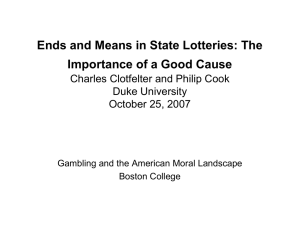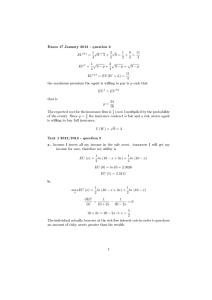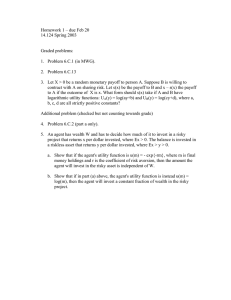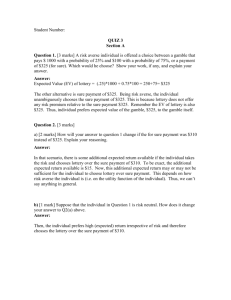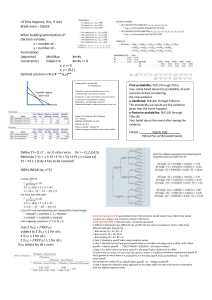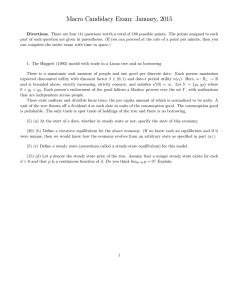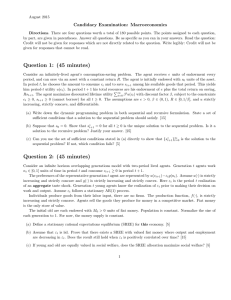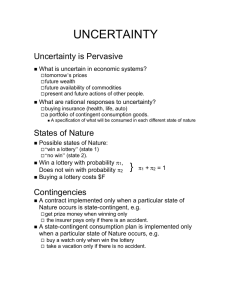Homework 2, Spring 2003 14.124 before
advertisement
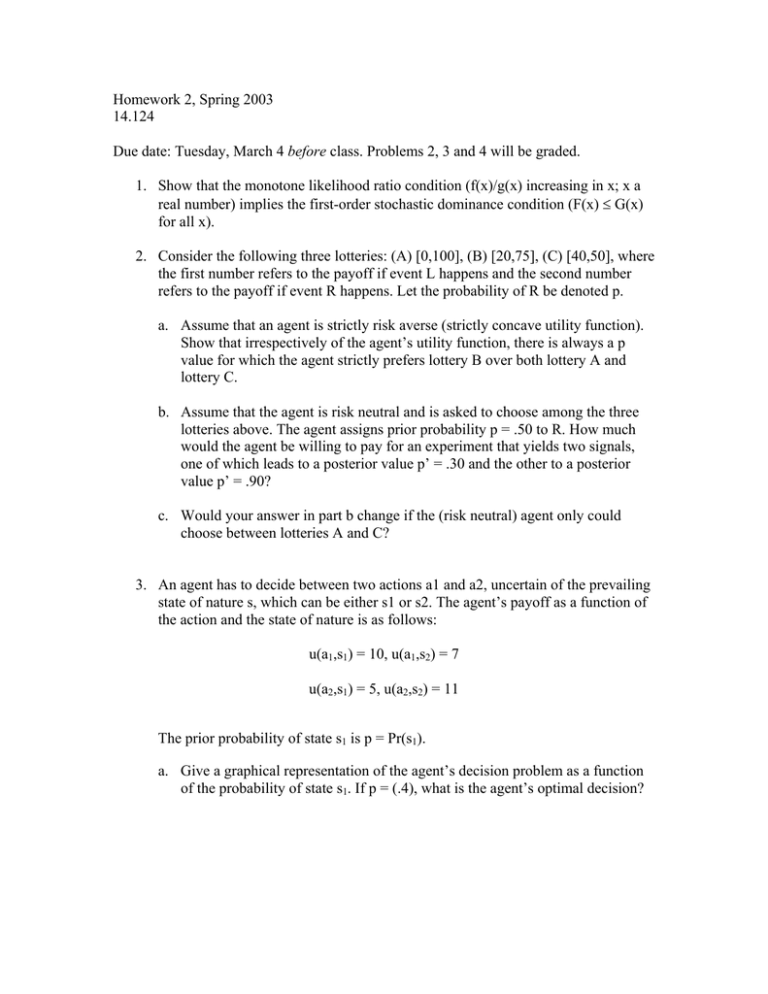
Homework 2, Spring 2003 14.124 Due date: Tuesday, March 4 before class. Problems 2, 3 and 4 will be graded. 1. Show that the monotone likelihood ratio condition (f(x)/g(x) increasing in x; x a real number) implies the first-order stochastic dominance condition (F(x) d G(x) for all x). 2. Consider the following three lotteries: (A) [0,100], (B) [20,75], (C) [40,50], where the first number refers to the payoff if event L happens and the second number refers to the payoff if event R happens. Let the probability of R be denoted p. a. Assume that an agent is strictly risk averse (strictly concave utility function). Show that irrespectively of the agent’s utility function, there is always a p value for which the agent strictly prefers lottery B over both lottery A and lottery C. b. Assume that the agent is risk neutral and is asked to choose among the three lotteries above. The agent assigns prior probability p = .50 to R. How much would the agent be willing to pay for an experiment that yields two signals, one of which leads to a posterior value p’ = .30 and the other to a posterior value p’ = .90? c. Would your answer in part b change if the (risk neutral) agent only could choose between lotteries A and C? 3. An agent has to decide between two actions a1 and a2, uncertain of the prevailing state of nature s, which can be either s1 or s2. The agent’s payoff as a function of the action and the state of nature is as follows: u(a1,s1) = 10, u(a1,s2) = 7 u(a2,s1) = 5, u(a2,s2) = 11 The prior probability of state s1 is p = Pr(s1). a. Give a graphical representation of the agent’s decision problem as a function of the probability of state s1. If p = (.4), what is the agent’s optimal decision? b. Let the agent have access to a signal y before taking an action. Assume y has two possible outcomes with the following likelihoods Pr(y1|s1) = O1 Pr(y1|s2) = O2 How valuable is this information system if O1 = O2 = ½? How valuable is it if O1 = ½ and O2 = 0? c. Show that, irrespectively of the prior, the information system O1 = ½ and O2 = 0 is preferred to the information system O1 = ½D + ½E and O2 = E, where D and E are any numbers between 0 and 1. (Hint: show that latter system is garbling of former). 4. An agent can work hard (e = eH) or be lazy (e = eL), where eH > eL > 0. There are two profit levels, x1 and x2; x1 < x2. Hard work makes the high profit level more likely. Specifically, Prob(x = x2) is fH if the agent works hard and fL < fH, if the agent is lazy. The principal can only observe realized profits x. The principal is risk neutral and the agent is risk averse with preferences u(w) - e. The utility function u is strictly concave and increasing. a. Assume that the Principal’s reservation utility is 0; that is, the Principal has to be assured a non-negative profit. Show how to solve for the Pareto Optimal action and incentive scheme s(xi) = si, i = 1,2, where si represents the payment to the agent if the outcome is xi. b. Suppose that the agent is given the opportunity to choose a third action eM with the features that Prob(x2|eM) = ½fH + ½fL and eM > ½eH + ½eL. Can the Principal implement eM? c. Suppose that the second-best solution in Part a is such that it is optimal to implement eH. Let the agent have access to the action eM described above, but assume now that eM < ½eH + ½eL. Will the solution to Part a stand once the agent is given access to eM?
